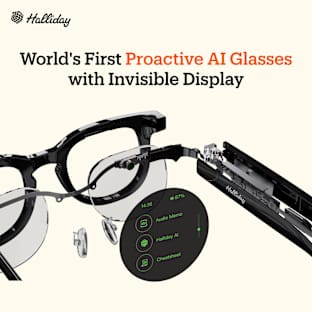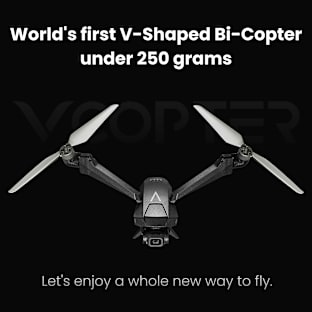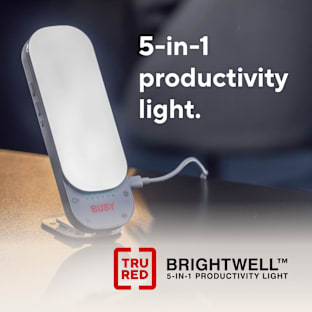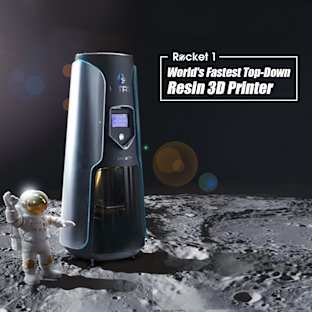![]()
Petoi Bittle is a tiny but powerful robot that can play tricks like real animals. We fine-tuned every bit to fit agile maneuverability into a palm-sized robot pet. You can bring Bittle to life by assembling its puzzle-like frame and downloading our demo codes on GitHub. You can also teach it new skills to win prizes in our community challenges. Bittle makes a perfect tool for learning, teaching, researching, or a surprising gift to impress your family and friends. Bittle is not a toy for small kids. We recommend parental guidance to appreciate its rich content and avoid damage or injury.
![]()
Bittle walking on the desk
Evolving with an open-source gene, Bittle is an open platform to fuse multiple makers' gadgets into one organic system. With our customized Arduino board coordinating all instinctive and sophisticated movements, you can clip on various sensors to bring in perception. You could also inject artificial intelligence capabilities by mounting a Raspberry Pi or other AI chips through wired/wireless connections.
![]()
Bittle is the second product of OpenCat, sibling of Nybble. Backed by a worldwide user group, you can find many tutorials and project ideas on the Internet. We make constant but tiny progresses every day. You can follow our social media (Instagram/Twitter @PetoiCamp) to get more frequent updates than newsletters. By posting on our forum, you can contribute to the community or simply make your wishes heard. We are always drawing the blueprint for futuristic robots!
![]()
Self-righting after falling from a slope (triggered by an infrared remote)
![]()
![]()
![]()
Bittle is a palm-sized robot that moves with four legs rather than wheels. Legged motion gives it more freedom to navigate unstructured terrains, and expresses the joy of life whenever it moves. Such dynamic maneuverability was only seen on a few luxury robots from the best labs or tycoon companies previously, such as Boston Dynamics Spot or Sony Aibo. We came up with a grassroots solution to simplify the system to make it affordable and mass-producible.
![]()
Walk the dog. Click the image to see a longer clip.
Bittle is a compact system of five major components: body frame, actuator, electronics, battery, and the software to coordinate all the hardware to perform varied tasks.
Body frame
We designed Bittle's interlocking frame as a 3D puzzle with very few screws involved. Most body parts are symmetric for simplicity and aesthetics.
![]()
Puzzle-like body frame. Click the image for the full assembling animation.
It's a pleasure to assemble and disassemble Bittle for teaching or maintenance. On average, it takes about one hour to put together the body from scratch.
![]()
Build a robot dog on your own!
Each piece has gone through tens of iterations with 3D printing. We then use high-strength injection-molded plastic to provide the best protection from collision and dust (it's NOT waterproof!). In the stress tests, the assembled robot can take an adult's stepping without breaking any components (do NOT try this at home!).
![]()
We also designed Bittle to be soft. Besides the elasticity of the material, the spring-loaded upper legs flatten the shock on joint servos to protect their gears. Bittle usually survives regular collisions. In the extreme cases, it will disintegrate at the designated "weak link in the chain", which is easy and cheap to reinstall or replace.
![]()
Passive compliant joints
We designed the frame to be compatible with most 9g servos. You could order the "Bittle Shell" perk alone to compile your spare servos into a beautiful action figure!
Actuator
We visited several servo manufacturers and iterated many times to find the optimized parameters. It will be model P1S, a slim, fast servo with a controllable angle of 270 degrees.
![]()
P1S servo
We use nine P1S servos to actuate Bittle. Eight of them are for walking joints, and one is for head panning. We will also include one spare servo for replacement, as brushed motors are consumable after a certain period of wearing. You may order the "Bittle Servo Set" perk if you expect to use Bittle intensively for teaching or researching.
After two years of production and optimization, we are glad to announce the new P1L servo. It uses plastic gears and mechanical and digital protections to achieve a performance similar to P1S. It can be a cost-effective alternative if you only plan to use Bittle by itself. For example, building and coding with Bittle, but not using it to carry heavy sensors or kick a football.
![]()
P1S and P1L servos
To simplify your checkout process, we now provide two kit forms. The original Bittle with P1S servos is named Robotics Kit at a higher price range. The Bittle with P1L servos is named STEM kit at a lower price range. You may choose according to your specific use cases.
![]()
Electronics
Bittle is driven by NyBoard V1, a customized Arduino board with rich peripherals. We fully utilized the chip of a regular Arduino Uno to coordinate sophisticated motions. The board can drive at least 12 PWM servos, and an IMU (Inertial Measurement Unit) is used for balancing. It stores "muscle memory" and detects body status (orientation and acceleration) for balancing. We provide an infrared remote to trigger basic movements. The board also listens to string commands from the serial port, such as "walk", "sit", or more detailed instructions for individual joints.
![]()
NyBoard V1
NyBoard V1 is a revision of NyBoard V0 that has been driving 2000 Nybbles all over the world. We continue to provide a 2x5 socket on NyBoard V1 for mounting Raspberry Pi. It powers the Pi and communicates with it through the serial or I2C network. The Pi gives Bittle the ability to analyze more sensory data, get connected to the Internet, and make decisions by itself. Due to Bittle's small size, it best fits Pi Zero and Pi 3A+. For larger Pi models, you will need to tilt the Pi and 3D print some supporting structures.
![]()
Raspberry Pi 3 A+ and Pi camera on Bittle
Thanks to the Arduino and Raspberry Pi community, you can find many customization ideas for Bittle. There are four Seeed Grove sockets on NyBoard V1 for extensible modules. To make installation easier, we designed Bittle's head as a clip to bite on those modules. That explains why we created a dog out of OpenCat this time. There's also a screw hole inside Bittle's head for fixing additional modules.
![]()
Extensible modules
We developed a Bluetooth dongle for wirelessly uploading codes and controlling Bittle from PC or smartphone Apps. We also developed a WiFi dongle for wirelessly communicating with Bittle. You can play with Bittle without messing around with cables. Wireless is also essential when you are studying balancing related motion planning. You can even utilize the computational power of a remote "brain" without being constrained by Bittle's size and cargo capacity. The dongles are compatible with our previous Nybble model.
![]()
Bluetooth and WiFi dongles
Furthermore, we are developing an ESP32 development board with native Bluetooth and WiFi connectivity. We have made a functional beta version called the "BiBoard V0" perk for developers. We expect a considerable performance boost, and you are welcome to join our exploration.
![]()
BiBoard V0
Software
Bittle is driven by our OpenCat code. It has 3K lines of Arduino codes excluding 3rd party libraries. It defines the minimal data structure and algorithms for performing quadruped motion. We also provide example commander and parser in Python so that you can send instructions from other devices. The code is already running on thousands of small quadruped robots, including many variants of OpenCat.
![]()
The OpenCat codes are open source on Github
You can program Bittle at different levels in various coding environments, such as C in Arduino IDE and Python in the terminal. We are collaborating with TinkerGen, a STEM education company that kindly developed Codecraft (a graphical coding environment) for Bittle. They will also provide a free curriculum for you to learn programming in Codecraft and create a wide array of educational and fun projects with it!
![]()
You can code in Arduino IDE, Python, Codecraft, and many other environments
We plan to refactor Bittle's code between the production and release it before Bittle's delivery. You may start to explore the current OpenCat repository on GitHub to get familiar with the framework. We will announce new community challenges with huge prizes in the community section!
![]()
Bittle climbing up a step under realtime instructions sent through Bluetooth
Battery
We designed a Li-ion battery pack with a built-in charging and protection circuit. It can slide into the track underneath Bittle and tune its center of mass. It can power Bittle for at least one hour of continuous walking. It also has an RGB LED to indicate the battery's status.
![]()
Li-ion battery with onboard charging and protection circuit
With the slide-in installation mechanism and an anti-reverse plug, it's not too hard to switch batteries. You may order extra batteries for uninterrupted researching or playing. With some reconfiguration, it can also power our previous Nybble models.
You can check this 30-min interview by Hackster.io for all the cool features.
![]()
Bittle is a perfect example to show "small is big". We wanted to encourage people to free their creativity and make wonderful things from limited resources. We have a growing community since the release of the OpenCat demo. We have @petoicamp on social media to update our fans about the progress of the project. After the launch of Nybble, we built the forum on our site (petoi.com) to discuss the project, showcase DIY models, and add function modules.
![]()
Petoi Camp, the OpenCat forum
Looking back at all the challenges we went through, the community was the most significant support that encouraged us to continue. We got thousands of backers to bring Nybble to life. Fans all around the world volunteered to translate our documentation into their languages. And many developers added new features to OpenCat. We cannot wait to see what Bittle will bring to us!
![]()
An Android App (Code&Robots) developed by one of our fans
To make our community more productive, educational, and rewarding, we will launch an online challenge for all OpenCat users. You can find our proposed rules in this forum post and give suggestions before it officially starts. In short, we will define several tasks that can be measured quantitatively, e.g., programing Bittle to get onto the highest step. You have to both demo your solution and teach others to validate your entry. On the first day of each month, we will announce the world's record-breaker and gift a free Bittle or Nybble to the winner!
![]()
Who will be the first Bittle backflipper and enter our Hall of Fame?
![]()
![]()
Bittle standing on my fingers
Bittle is 20cm x 11cm x 11cm in dimension. It weighs less than 280g but can carry up to 450g cargo under its belly. With proper programming and calibration, It can run faster than two body lengths per second. Bittle can remember tens of instinctive motion patterns and can perform more fancy tricks with realtime instructions.
![]()
Bittle (250g) trotting with an iron cargo (465g)
P1S servo uses a coreless motor, alloy gears, ball bearing, and plastic case. It's 8.4V compatible, high speed, and has a controllable range of 270 degrees.
![]()
Bittle on a treadmill
NyBoard V1 has an Atmega328P with 16MHz CPU, 2K SRAM, and 32K flash. We also added an 8K I2C EEPROM, an IMU, a servo driver for 12 PWM servos, an infrared receiver, and a buzzer. It has a 2x5 socked to mount on a Raspberry Pi.
BiBoard V0 has an ESP32 with 240MHz dual-core CPU, 520KB SRAM, and up to 16M flash. It has built-in WiFi/Bluetooth, 12 PWM servo pins, an IMU, an infrared receiver, an audio amplifier, and a speaker. It has several communication ports to connect to other devices.
The Bluetooth dongle is compatible with Windows, macOS, and Android. It can also work on IOS with some auxiliary software. It can be used for uploading Arduino sketch or communicating with the NyBoard. The WiFi module can host a simple WebUI and communicate with the NyBoard.
![]()
BiBoard V0, NyBoard V1 with Raspberry Pi 3 A+, and NyBoard V1 with a Bluetooth dongle
The intelligent camera module is our ODMed product. It integrates multiple vision recognition algorithms running on its ESP32 dual-core processor. It can return recognized human body, objects, and symbols through serial/I2C/WiFi at a rate of 25fps or 50fps. It can even stream video through WiFi. We will also include a deck of symbol cards. You can refer to this link for more information.
![]()
Intelligent camera module and the symbol deck
![]()
We have been residing in the factory for six months and commit to staying until we start to ship Bittles.
![]()
Spark Erosion Machining (EDM) for making precise molds
We have finished 95% percent of the injection molds of the body frame. The lead time for injection production is one week. More funds are required to make the mold for the optional silicone tail and paws. The lead time is one month. We will provide their 3D printing files if they cannot catch up in time. We are still optimizing the parameters of servos for longer life-span. The lead time is at least two months. NyBoard V1 and battery are production-ready, and the suppliers are waiting for down payments for mass production. The lead time is 45 days to 50 days. We also need to design a sturdy and compact packaging box for international shipping. The lead time is one month.
![]()
OpenCat started as the founder Rz Li's pet project in 2016. After the demo video went viral in 2018, he devoted all his time and resources to bring this sophisticated and cute robot to the public. He founded Petoi and successfully crowdfunded the Nybble project in 2018. All the earnings have been put into the fulfillment of Nybble and the R&D of Bittle.
![]()
We are still fulfilling Nybble orders for a worldwide audience
Our mission is to bring affordable robotic pets from fiction to reality. We grew from a single maker to a company that can collaborate and negotiate with manufacturers to get the best solutions to our needs. We have many more cool ideas in mind, and Bittle is another small step towards our ideal shape of household robots.
![]()
Nybble and Bittle
![]()
You can help to bring this project to life by backing a wide selection of perks. The main perk for this campaign is the Bittle kit.
![]()
Bittle kit (the final contents are subject to change)
You can pick your base perk, then choose your add-on items during checkout. You will also need to pay the shipping of your base perk during checkout. We will cover the increased shipping fees of add-on items as a discount.
We will ship your packages from our Chinese factory with reliable international couriers. Your government will collect the customs tax/fees upon delivery. Note: It can be expensive for some countries and areas. We are very grateful for your support and hope to bring you a unique product ASAP!
![]()
Founder and CEO
Rz is a physics PhD and computer science master. He previously taught computer science at Wake Forest University.
Rz is a maker with broad interests in art, literature, and science. He started the OpenCat project in 2016 and successfully launched Nybble in 2018. Devoted to bringing robotic pets to more people, Bittle is his second gift to the world.
System Engineer
Len has a master's degree in computer communication systems. He has been running various STEM camps over the past five years.
Len likes to try out new electronic products and excels in remembering their parameters. He designed the variant PCBs and communication modules to make Bittle more extensible and user friendly.
Advisor
Kai is an alumnus of UC Berkeley and Carnegie Mellon University(CMU). He served as the chapter president of Berkeley & CMU alumni network in Shanghai and is the co-president of the Berkeley Chinese Alumni International Association, Silicon Valley Chapter. He was the VP of Engineering for ALO7, a leading English language learning education technology company in China.
Kai has rich experiences and expertise in startup bootstrapping/fundraising/scaling and project/product/engineering management. He helps supervise Petoi's management and development.
![]()
Hardware products are especially "hard" to deliver compared to pure software products. After two years of experience with Nybble, we foresee the following risks and are working hard to mitigate them.
* Supply chain, cash flow, and inventory management
Any delay in the supply chain could halt production at any stage. We try to solve this by carefully estimating the lead time and divide sequential dependency into parallel processes, and moving the most challenging tasks to our top priority.
This time we include batteries to avoid users' confusion in picking the right ones. However, the production for 2S Li-ion batteries requires an MOQ of 5000 units. It's a sizeable one-time investment, and the storage of many batteries is also risky. We will rent a dedicated room to store the batteries. We will also optimize the production process to reduce the lagging period between stocking and shipping the batteries.
* Certificates and international shipping
Bittle needs to go through several standard tests for importing and exporting certifications. The tests may take up to two months after we send the final products. We took the advice from our experienced manufacturers that the specifications should not be too exceptional. We will reserve Bittle's full dynamic potential to make it a more stable product.
The breakout of COVID-19 is adding another layer of uncertainty for production and shipping. The factories are subject to close should any case was reported in the area. The international couriers are also having a hard time arranging oversea shipments. There may be a longer wait time between our shipping date and the delivery on your side.
We will ship Bittles worldwide through international couriers that can provide reliable tracking. Backers will be responsible for paying customs and duties. The amount varies by country or region. We may have a few customers canceling their orders if the fees upon delivery are too high. So we want to make sure everyone knows about the shipping policy before they order.
* Team development
We currently have two people working full-time on the project. We managed to push it to the current stage and will scale up the team in time for the massive amount of work towards fulfilling your orders.









































































































